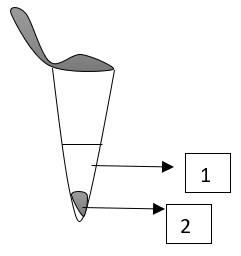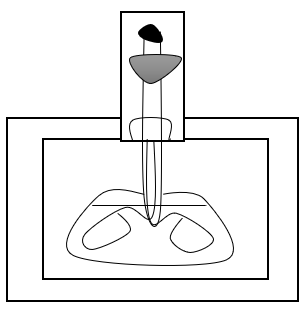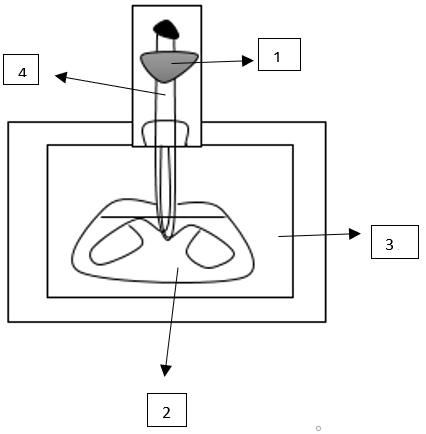This set of Bioseparation Processes Multiple Choice Questions & Answers (MCQs) focuses on “Ultracentrifugation”.
1. A __________ is a specialized form of centrifuge which rotates at high speed.
a) Disk centrifuge
b) Ultracentrifuge
c) Stack centrifuge
d) Centrifuge
View Answer
Explanation: The ultracentrifuge has a step up of rotor that provides rotation at higher speed when compared to the normal standard form of centrifuge.
2. The ultracentrifuge can sediment ___________ in the bioseparation technique.
a) Colloidal particles
b) Huge particles
c) Solution
d) Non-colloidal
View Answer
Explanation: The ultracentrifuge sediments colloidal as well as smaller particles when the mixture of various components are subjected to the separation process.
3. The ultracentrifuge is used to __________ in the process of separation.
a) Determination of weight
b) Determination of boiling point
c) Determination of size
d) Determination of sedimentation coefficient
View Answer
Explanation: The ultracentrifuge is used to in the determination of size specifically for the small particles also it helps in knowing the molecular wright of the large particles in the mixture of products subjected to the separation process.
4. What are the types of ultracentrifuge?
a) Preparative
b) Both preparative and analytical
c) Analytical
d) Gradient
View Answer
Explanation: The two types of ultracentrifuge are analytical and preparative ultracentrifuge. The analytical ultracentrifuge is dependent on the properties of molecules that involves movement through he fluid while the preparative ultracentrifuge is used for separation of particles containing suspensions.
5. The preparative ultracentrifuge are used for the particle separation based on ___________
a) density
b) pressure
c) weight
d) solubility
View Answer
Explanation: The separation in preparative ultracentrifuge is based upon the density of the particles being separated, the isolation and the harvesting of the particles that are dense and can be collected in the form of pellet.
6. The analytical centrifuge is based upon __________
a) non-Hydrodynamic properties
b) hydrodynamics properties
c) physical properties
d) chemical properties
View Answer
Explanation: The analytical centrifuge works on the basis of the hydrodynamic properties i.e. the properties like density, mass or shape. The molecules are separated by the acceleration in the samples and the centrifugal force leads to the separation of particles.
7. The rotation speed of ultracentrifuge is _________
a) 10000-15000 rpm
b) 15000-20000 rpm
c) 20000-25000 rpm
d) 30000-50000 rpm
View Answer
Explanation: The options stating 10000-25000 rpm are less when compared to 30000-50000 rpm and it is known that ultracentrifuge works on higher speed than other normal centrifuges used in the separation process.
8. The higher rotating speed in ultracentrifuge leads to __________
a) cooling
b) heating
c) nelting
d) solidifying
View Answer
Explanation: The high speed of the rotor in the ultracentrifuge leads to the heat generation in the system and hence it needs to have some arrangements to provide cooling in the setup.
9. A mixture of solution has been separated by the help of ultracentrifuge and the final result is given below so, label the given diagram.

a) 1 – pellet, 2 – Supernatant
b) 1 – supernatant, 2 – pellet
c) 1 – sediment, 2 – debris
d) 1 – debris, 2 – slurry
View Answer
Explanation: The particles which are settled in the bottom of the tube after the process of centrifugation are known as pellet and the one remaining in the liquid having the sample in it is known as supernatant.
10. The __________ samples are separated using ultracentrifuge and can get good result.
a) Homogenized
b) Heterogenised
c) Non-homogenized
d) Sediment
View Answer
Explanation: The homogenized samples are broken into similar sized identical pieces and are easy to be separated through ultracentrifuge based upon the size, density of the particles that needs to be separated.
11. What is the significance of the given diagram?

a) Filtration chamber
b) Ultracentrifuge
c) Sedimentation unit
d) Dialysis unit
View Answer
Explanation: The given setup is an ultracentrifuge as it has vacuum chamber in which the rotor is fixed having tubes to pour sample for the process of separation.
12. Label the given diagram of the ultracentrifuge.

a) 1 – turbine, 2 – rotor, 3 – vacuum chamber, 4 – shaft
b) 1 – shaft, 2 – rotor, 3 – vacuum chamber, 4 – turbine
c) 1 – rotor, 2 – shaft, 3 – turbine, 4 – vacuum chamber
d) 1 – vacuum chamber 2 – shaft, 3 – turbine, 4 – rotor
View Answer
Explanation: The vacuum chamber provides a surrounding to the rotor to fit in for the separation of particles, turbine provides conversion of heat to the separation medium which are generate by the high speed of the centrifuge.
13. Who is the inventor of the analytical ultracentrifuge?
a) Thomas Edison
b) Issac Netwon
c) Theodor Svedberg
d) Albert Einstein
View Answer
Explanation: Thomas Edison invented bulb, phonograph and motion picture; Albert Einstein gave theory of relativity; Newton is known for discoveries in the field of optics and Svedberg invented analytical ultracentrifuge and was also awarded a Nobel Prize for the same.
Sanfoundry Global Education & Learning Series – Bioseparation Processes.
To practice all areas of Bioseparation Processes, here is complete set of 1000+ Multiple Choice Questions and Answers.
If you find a mistake in question / option / answer, kindly take a screenshot and email to [email protected]
